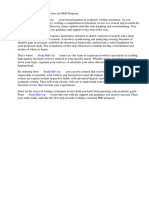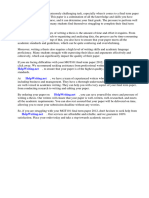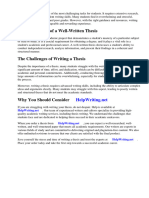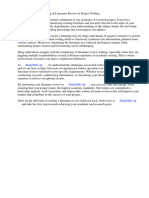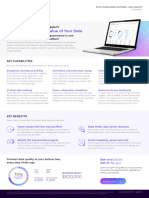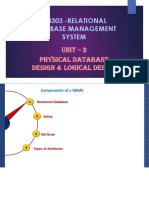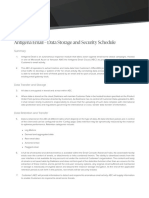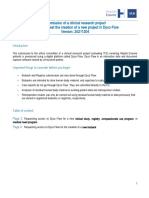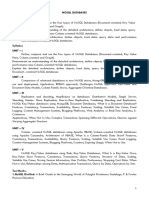Basic Steps In Literature Review
Embarking on a literature review can often be a daunting task for many individuals, whether they are
seasoned researchers or students starting their academic journey. The intricacies of navigating
through countless scholarly articles, books, and other sources to compile a comprehensive review can
be overwhelming. However, mastering the process of conducting a literature review is crucial for
anyone engaged in academic or research pursuits.
Understanding the Difficulty
The difficulty in writing a literature review lies not only in the sheer volume of available literature
but also in the meticulousness required to sift through it effectively. It involves synthesizing existing
research, critically analyzing various perspectives, and identifying gaps in the current knowledge
base. Furthermore, articulating these findings in a coherent and structured manner demands both
time and expertise.
Recommended Approach
To ease the burden and ensure a high-quality literature review, it is advisable to follow a systematic
approach. This involves several key steps:
1. Defining the Scope: Clearly delineate the boundaries of your literature review by specifying
the research questions or objectives you aim to address.
2. Conducting Comprehensive Searches: Utilize various academic databases, libraries, and
online repositories to gather relevant literature. Employing appropriate keywords and search
strategies is essential for thoroughness.
3. Screening and Selecting Sources: Scrutinize the gathered literature to determine its
relevance and reliability. Exclude sources that do not align with your research focus while
prioritizing those that offer valuable insights.
4. Analyzing and Synthesizing Information: Engage critically with the selected literature,
identifying key themes, arguments, and findings. Synthesize these elements to construct a
coherent narrative that contributes to the understanding of your research topic.
5. Identifying Gaps and Formulating Perspectives: Reflect on the existing literature to
pinpoint areas that warrant further investigation or exploration. Offer your insights and
interpretations, highlighting potential avenues for future research.
Why ⇒ StudyHub.vip ⇔?
Amidst the challenges of writing a literature review, seeking assistance from expert professionals can
be immensely beneficial. ⇒ StudyHub.vip ⇔ offers specialized services tailored to meet your
academic needs. With a team of experienced writers well-versed in diverse subject areas, we ensure
the delivery of high-quality, customized literature reviews that adhere to academic standards.
By entrusting your literature review to ⇒ StudyHub.vip ⇔, you can alleviate the stress associated
with this demanding task and focus your energies on other aspects of your academic or research
endeavors. Let us help you navigate through the complexities of literature review writing with
efficiency and excellence.
Order your literature review from ⇒ StudyHub.vip ⇔ today and experience the difference expertise
makes!
�Financial Disclosure: The author declared that this study has received no financial support. It starts
with the initial report of the concept, issue phenomena, or theory, and when it first emerged in the
literature. Enter this information in the top left box of the PRISMA flow chart. Technologic
Considerations for Supporting Direct Care Nurses’ Information Needs Nurses need timely, patient-
specific clinical information to provide care. Search strategies can be used individually or in
combination. Provide, in a brief and concise way, the context of the study. All authors except for
TCH, JMT, EAA, SEB, and LAM attended the development meeting. Reply Delete Replies Reply
Unknown 5 February 2018 at 06:50 Wow, great post. On the other hand, inductive logic means, you
ought to apply facts to arrive at a theory based on observations. For this you have to reflect and try
to answer the following questions: Is the research area mature enough, with a lot of published
studies. No personal information or financial data will be passed to the third parties. Many people
would prefer to sit down and read an article than sit down and craft what they have already read.
Examples include wrong setting, wrong patient population, wrong intervention, wrong dosage, etc.
Different templates are available depending on the type of review (new or updated) and sources used
to identify studies. The PRISMA checklist can be downloaded in PDF or Word files. Importance: It
is necessary to write about the significance of your topic and the contribution it will make to the
concerned field. MML is supported by The Ottawa Hospital Anaesthesia Alternate Funds
Association and a Faculty of Medicine Junior Research Chair. Literature Review Writing Services
Reply Delete Replies Sam Young 30 October 2018 at 09:06 Thanks Jacob. Where will your
education and career journey take you? A recent review of nursing management information systems
found that nursing leaders use information systems to manage human resources, determine nursing
workload (nurse to patient ratio) and control costs. 22 These systems are largely based on two
sources of data: patient classification measures and hospital resource measurement. See how this
publication links up with what's already out there. Note that a “report” could be a journal article,
preprint, conference abstract, study register entry, clinical study report, dissertation, unpublished
manuscript, government report or any other document providing relevant information We
recommend authors refer to PRISMA 2020 early in the writing process, because prospective
consideration of the items may help to ensure that all the items are addressed. The literature review
section appears to be massive. Create the review protocol In this protocol, the entire step-by-step
procedure for reviewing is defined. HIMSS; 2009. Dunn Lopez K, Gephart SM, Raszewski R, Sousa
V, Shehorn LE, Abraham J. Theoretical Approach This approach focuses on organizing your review
around different theoretical frameworks or perspectives relevant to your topic. Finally, don’t forget
to tie your previous work to the academic knowledge that is currently available. And among many
options, you can choose a favorite writer. Include Names: Include the names of the authors of the
chosen theories. In other words, a research article uses expert sources as support for your thesis,
whereas a Literature Review discusses the sources.
�What flaws do you believe should be addressed in your paper. Updating guidance for reporting
systematic reviews: development of the PRISMA 2020 statement. Uncover connections and
relationships among diverse research pieces to construct a cohesive narrative within your literature
review. Consider including a Plain Language Summary (PLS) when you publish your systematic
review. It could be a journal article, preprint, conference abstract, study register entry, clinical study
report, dissertation, unpublished manuscript, government report, or any other document providing
relevant information Record —The title or abstract (or both) of a report indexed in a database or
website (such as a title or abstract for an article indexed in Medline). Example: In a review of
psychological studies on memory, sections could be organized around cognitive, behavioral, and
neuroscientific theories. Cochrane handbook for systematic reviews of interventions: version 6.0.
London: Cochrane; 2019. You will need to explain why you chose that particular type of review-
which will be dependent on your research area, problem, and method. All the materials from our
website should be used with proper references. Are there any weaknesses that should be addressed.
Delete Replies Reply Reply Unknown 3 December 2017 at 05:18 Wow,great post. Do this for all the
sources you intend to use in your review. Google Scholar Moher D, Shamseer L, Clarke M,
PRISMA-P Group, et al. Digital technologies (e.g., clinical decision support, telehealth, monitoring
systems, artificial intelligence) can provide important new sources of information and address
limitations to existing information sources, such as organizing EHR data to efficiently identify a
patient’s risk for clinical deterioration. MML is supported by The Ottawa Hospital Anaesthesia
Alternate Funds Association and a Faculty of Medicine Junior Research Chair. Search the Literature
Searching Article Databases Finding Full-Text of an Article Citation Chaining When to Stop
Searching 4. Points out Errors: It points out glaring errors and overlooked questions in your research.
Write the Introduction to the topic and your study, Methods of your research, Results of your
research, and Discussion of your results. This should be the number of reports sought for retrieval
(Step 6) minus the number of reports not retrieved (Step 7). However, technologies that fail to
adequately address information needs, or are difficult to use, will have limited adoption. Systematic
Reviews in the Social Sciences This book provides practical, step-by-step advice on conducting a
systematic review and can be used for health sciences as. Title: Adalimumab Induction Therapy for
Crohn’s Disease Previously Treated with Infliximab. None of these authors were involved in the peer
review process or decision to publish. PRISMA Flow Diagram PRISMA is an evidence-based
minimum set of items for reporting in systematic reviews and meta-analyses. Also, you can discuss
the conclusions which were arrived at as you compare results from qualitative and quantitative
research. Reply Delete Replies Reply Unknown 5 February 2018 at 06:50 Wow, great post. Use your
conceptual schema to identify where you will begin and in what order. MJP prepared all materials
for the development meeting. If you are a working student or a student parent, you might not have
enough time to conduct your research. Step 5: Begin The Writing Process Upon gathering and
organizing sources, begin the writing phase: Introduction: Begin by stating your research question
and explaining why your review is important.
�It is common in some areas of research that the abstract (or abstract) has little or poor quality
information. Taking a couple of days and reviewing your works gives you better insight and an
opportunity to look at your work differently. Note that a “report” could be a journal article, preprint,
conference abstract, study register entry, clinical study report, dissertation, unpublished manuscript,
government report or any other document providing relevant information We recommend authors
refer to PRISMA 2020 early in the writing process, because prospective consideration of the items
may help to ensure that all the items are addressed. DM is chair of the EQUATOR Network, IB is
adjunct director of the French EQUATOR Centre and TCH is co-director of the Australasian
EQUATOR Centre, which advocates for the use of reporting guidelines to improve the quality of
reporting in research articles. J Clin Epidemiol. 2021. Page MJ, McKenzie JE, Bossuyt PM, et al.
Offers Methodological Guidance: Helps choose appropriate research methods for quality outcomes.
This landscape informs the reader that the author has indeed assimilated all (or the vast majority of)
previous, significant works in the field into her or his research. What is the situation or disease you
are interested in. In all reputable journals, peer-reviewed or refereed research is published only after it
has been reviewed by other researchers in the field. Therefore, it aims to find all the relevant
publications. Steps for the systematic review We can summarize the stages of a literature review into
three phases: Planning the Review, Conducting the Review, and Reporting the Review. It should not
feel like a glorified annotated bibliography. ( ). If you have any questions, please leave us a
comment below that we’ll be happy to answer. Critical Analysis: Do not write a mere description of
those studies, including your opinions on them and record all their weaknesses and strengths. None
of these authors were involved in the peer review process or decision to publish. This process is
usually done by 2-3 independent reviewers so as to control selection bias and minimise the risk of
excluding any relevant studies. The structure and depth of a literature review can vary depending on
the purpose and requirements of the research project. Once all search terms have been combined and
you have applied all relevant limits, you should have a final number of records or articles for each
database. They can write a high-quality literature review that will score you high grades. Nurses' time
allocation and multitasking of nursing activities: a time motion study. For example, the Iowa
Implementation Model for Sustainability Framework provides an organized approach for selecting
an implementation strategy based upon phases of implementation. 33 For example, after nurses have
obtained knowledge about a practice change, audit and feedback may be one implementation
strategy to promote adoption. In general, CDS is composed of three key parts. 24 Data management:
clinical data and decision rules or logic. Alternatively, you can use a database, or keywords to find
sources fast. J Clin Epidemiol. 2021;134:103-112. Page MJ, Moher D, Bossuyt PM, et al. Your
paper will also include a PRISMA chart that is an image of your research process.? Click an item
below to see how it applies to Step 8: Write the Review. Nurses that will be the eventual user of the
CDS need to be involved early and throughout CDS development to ensure that CDS tools are
usable, useful, align with workflow as a part of routine work. The review of the literature is defined
as a broad, comprehensive, in-depth, systematic, and critical review of scholarly publications,
unpublished scholarly print materials, audiovisual materials, and personal communications. The
PRISMA checklist and flow diagram provide a model to step you through the process and assist you
in writing your manuscript. Step 3: Identify Connections Synthesize information from selected
sources, identifying common themes, patterns, and trends. Write an Abstract describing your study
and a Conclusion summarizing your paper.? Cite the studies included in your systematic review and
any other articles you may have used in your paper.? If you wish to publish your work, choose a
target journal for your article.
































































